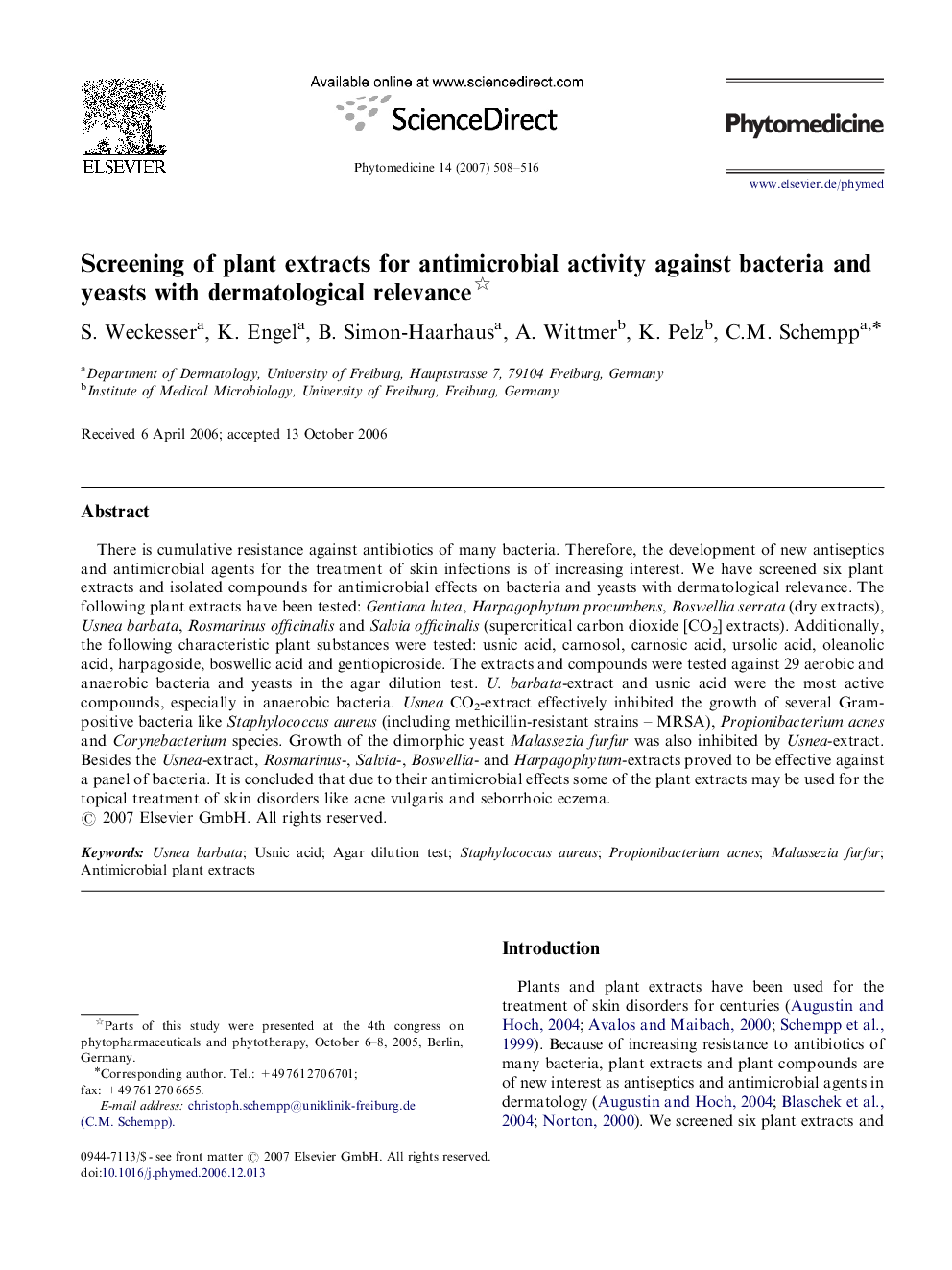| Article ID | Journal | Published Year | Pages | File Type |
|---|---|---|---|---|
| 2498046 | Phytomedicine | 2007 | 9 Pages |
There is cumulative resistance against antibiotics of many bacteria. Therefore, the development of new antiseptics and antimicrobial agents for the treatment of skin infections is of increasing interest. We have screened six plant extracts and isolated compounds for antimicrobial effects on bacteria and yeasts with dermatological relevance. The following plant extracts have been tested: Gentiana lutea, Harpagophytum procumbens, Boswellia serrata (dry extracts), Usnea barbata, Rosmarinus officinalis and Salvia officinalis (supercritical carbon dioxide [CO2] extracts). Additionally, the following characteristic plant substances were tested: usnic acid, carnosol, carnosic acid, ursolic acid, oleanolic acid, harpagoside, boswellic acid and gentiopicroside. The extracts and compounds were tested against 29 aerobic and anaerobic bacteria and yeasts in the agar dilution test. U. barbata-extract and usnic acid were the most active compounds, especially in anaerobic bacteria. Usnea CO2-extract effectively inhibited the growth of several Gram-positive bacteria like Staphylococcus aureus (including methicillin-resistant strains – MRSA), Propionibacterium acnes and Corynebacterium species. Growth of the dimorphic yeast Malassezia furfur was also inhibited by Usnea-extract. Besides the Usnea-extract, Rosmarinus-, Salvia-, Boswellia- and Harpagophytum-extracts proved to be effective against a panel of bacteria. It is concluded that due to their antimicrobial effects some of the plant extracts may be used for the topical treatment of skin disorders like acne vulgaris and seborrhoic eczema.
